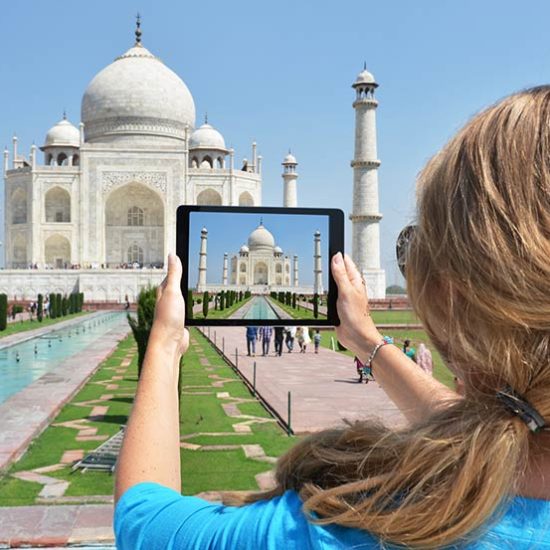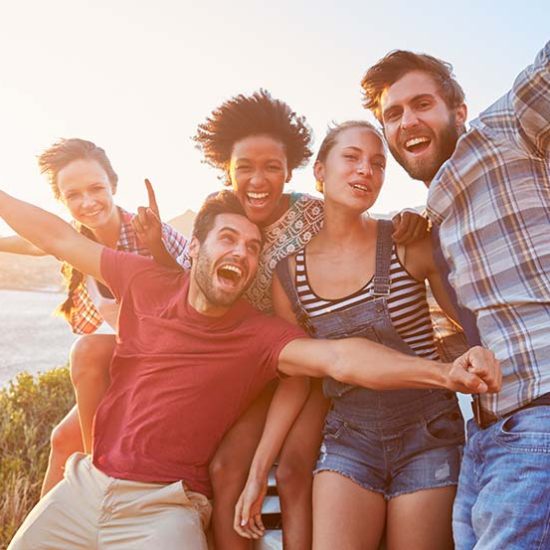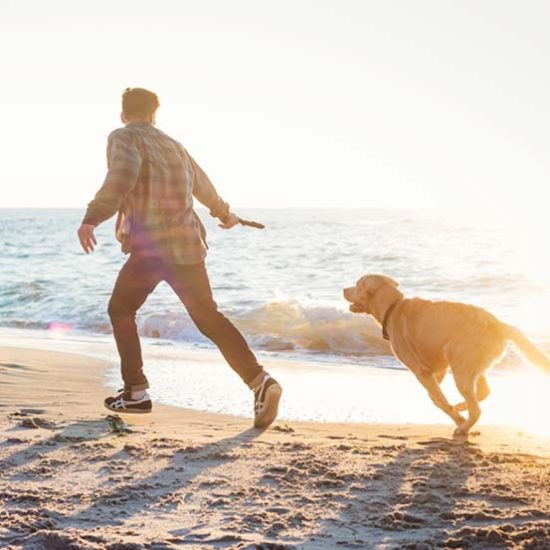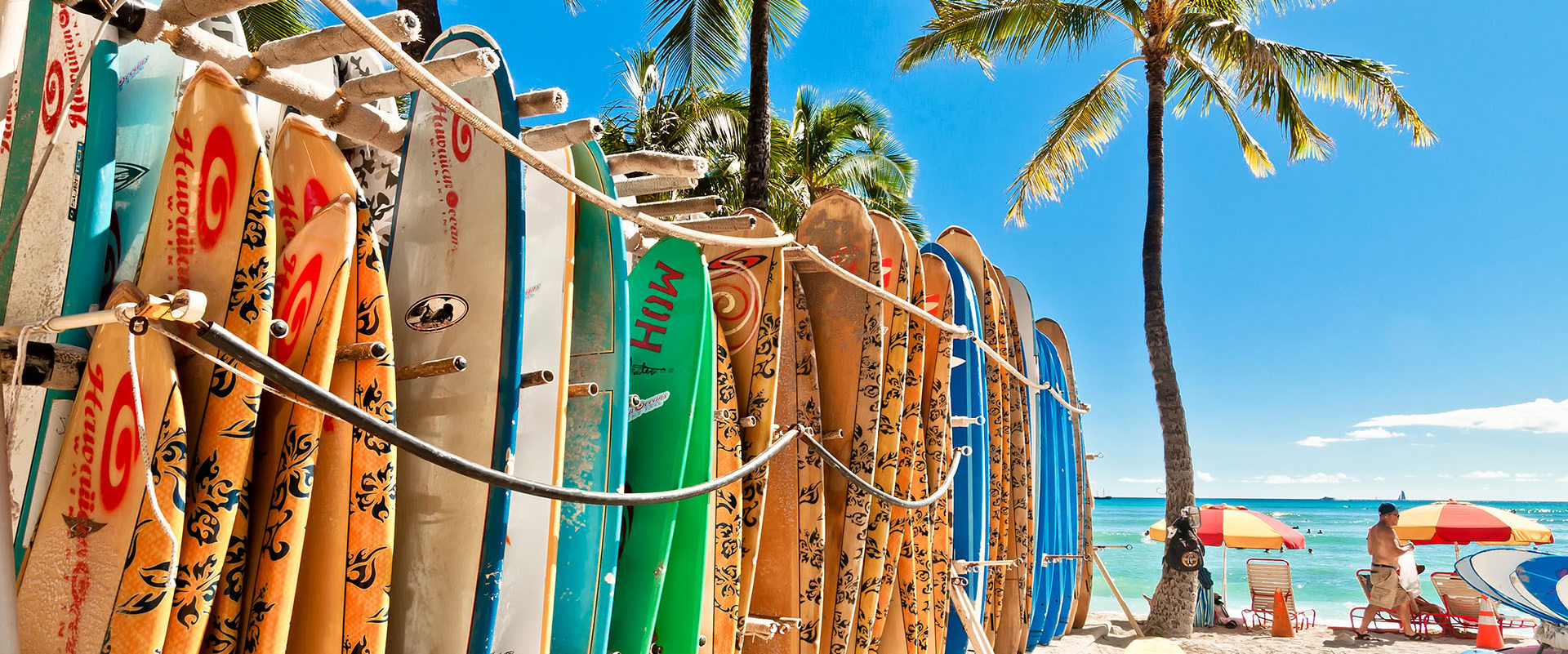Hawaii
Hawaii is a state of the United States of America. It is the only state located in the Pacific Ocean and the only state composed entirely of islands. The state encompasses nearly the entire Hawaiian archipelago, 137 islands spread over 1,500 miles.
History
There are six major islands to visit in Hawaii: Kauai, Oahu, Molokai, Lanai, Maui, and the island of Hawaii. Each has its own distinct personality, adventures, activities and sights.
Hawaii’s rich past comes to vivid life at incredible historic sites that help us understand the historical, cultural, and environmental forces that shaped Hawaii as we know it today. Whether it’s a unique natural wonder, a National Historic Site, Park or Monument, or a sacred place that connects us to Native Hawaiian customs, beliefs and practices, these sites will help you gain a deeper understanding of Hawaii on your next visit.
Oahu
Bishop Museum: Founded in 1889, the Bernice Pauahi Bishop Museum is the premier natural and cultural history institution in the Pacific region, housing more than 24 million cultural and natural treasures from Hawaii and Polynesia.
Leahi (Diamond Head) State Monument: The iconic crater sitting at the edge of Waikiki is named Leahi (forehead of the ahi fish) due to its profile resembling that of the fish. Visitors can hike a trail to the summit to see stunning views of the south shore of the island.
Iolani Palace State Monument: Built in 1882 by King Kalakaua, Iolani Palace was home to Hawaii’s last reigning monarchs and is registered as a National Historic Landmark. The public is welcome to visit on guided tours.
National Memorial Cemetery of the Pacific: The history of the United States military in Hawaii reaches back to the late 1800s. Also called “Punchbowl” for its location inside a crater, the National Memorial Cemetery of the Pacific was established in 1949 as a final resting place for those who served in the armed forces.
Nuuanu Pali State Wayside: The lookout on these steep cliffs offer panoramic views of the Koolau mountain range and the east side of the island. This was the site of the Battle of Nuuanu, where Kamehameha the Great defeated Oahu forces and brought the island under his rule.
Pearl Harbor: On Dec. 7, 1941, Oahu was struck by a surprise Japanese military attack that pulled America into World War II. Most of the destruction was centered at Pearl Harbor. Today, visitors can learn about that pivotal point in world history at the Pearl Harbor National Memorial, which includes the USS Arizona Memorial.
Hanaiakamalama – Queen Emma Summer Palace: The summer retreat of Queen Emma, wife of King Kamehameha IV, Hanaiakamalama houses a collection of the Queen’s personal belongings and furnishings.
Washington Place: This historic home named for President George Washington was the center of critical events that changed the course of Hawaii – it was the home and prison of Queen Liliuokalani, and later served as the residence of Hawaii’s governors.
Kauai
Daniel K. Inouye Kilauea Point Lighthouse: On a rocky peninsula, the 52-foot lighthouse was commissioned in 1913 and was dedicated to U.S. Senator Daniel K. Inouye in 2013. The point is also a national wildlife refuge for seabirds.
Waimea Canyon State Park: Nicknamed the Grand Canyon of the Pacific, the 10-mile-wide by 3,000-feet-deep Waimea Canyon on Kauai’s west side was carved by the Waimea River, which receives its water from Mount Waialeale.
Molokai
Kalaupapa Lookout at the Palaau State Park: This overlook features an amazing view of Molokai’s north coast and Kalaupapa National Historical Park, a remote setMore than 8,000 people affected by Hansen’s disease were exiled to the Molokai peninsula in the years 1866 to 1969. Today, a handful of patients voluntarily remain, and the park is now a place where people gather to honor the memories of those that came before. Saint Damien and Saint Marianne Cope both served patients here.tlement where sufferers of Hansen’s disease (leprosy) were exiled.
Lanai
Kaunolu Village: A favorite fishing spot of King Kamehameha I, this archaeological site features the largest surviving ruins of a prehistoric Hawaiian vilA significant and sensitive wahi pana (sacred place), Kaunolu was the religious and chiefly center for the island and its legendary stories connect Hawaiians to their ancestral homeland of Kahiki. Remains of the old fishing village can still be seen, including Kamehameha the Great’s former royal residence, on a mile-long trail around the coastline.
Maui
Haleakala National Park: Spanning 30,004 acres from the coast to its 10,023-foot summit, this park has a larger concentration of endangered species than any other natEncompassing 33,265 acres from the coast to its 10,023-foot summit, Haleakala National Park features the dormant volcano, Haleakala, which hasn’t erupted for 400 to 600 years. Visitors can explore the otherworldly summit and watch the sunrise, or visit the Kipahulu District on the east side of the island where waterfalls and pools can be seen.
Iao Valley State Monument: Home to the iconic Iao Needle, this is the site of the Battle of Kepaniwai, where the forces of King Kamehameha I conquered the Maui armThe 4,000-acre state park features Iao Needle, a landform that rises 1,200 feet from the valley floor. In 1790, Kamehameha the Great’s army defeated Maui forces here, in the Battle of Kepaniwai (the water dam), named after the way fallen warriors blocked the river.
Island of Hawaii
Akaka Falls State Park: A scAlong the lush, verdant Hamakua Coast, the streams of water coming down the slopes of Maunakea shape the land. See two of the most dramatic waterfalls, Akaka Falls (442 feet) and Kahuna Falls (100 feet), on this scenic self-guided walk.
Hawaii Volcanoes National Park: Two active volcanoes, Kilauea and Mauna Loa, make up Hawaii Volcanoes National Park, a UNESCO World Heritage Site. Like the island around it, the park is constantly changing. Its vast 323,431 acres include many opportunities for sightseeing and exploration, giving visitors glimpses of dramatic landscapes and historic places.
Hulihee Palace: A former summer home for Hawaiian royalty, Hulihee Palace is at the center of Historic Kailua Village. Across Kailua Bay lies Kamakahonu and Ahuena Heiau, the royal residence of King Kamehameha. And across Alii Drive you can see Mokuaikaua Church, Hawaii’s first Christian church.
Kaloko-Honokohau National Historical Park: Preserving Hawaiian culture, the Koloko-Honokohau National Historical Park encompasses two ahupuaa (land divisions), protecting archaeological sites such as fishponds, heiau (temples) and house sites, where visitors can see first-hand what life in ancient Hawaii was like.
Kealakekua Bay State Historical Park: Kealakekua Bay is the site of a heiau (temple) to Lono, and also the site one of Hawaii’s most significant historical turning points – Captain James Cook first landed on the island here in 1779. The largest sheltered bay on the island of Hawaii, Kealakekua Bay is also a marine life conservation district.
Lapakahi State Historical Park: On the Kohala Coast, a 600-year-old Hawaiian fishing village is being preserved in archaeological sites that make up Lapakahi State Historical Park. Visitors can take a self-guided hike on the park’s interpretive trail.
Lyman Mission House and Museum: Built in 1839 for Christian missionaries David and Sarah Lyman, the historic Lyman Mission House offers tours to give visitors a feel for early missionary life in the Islands. Next door, the Lyman Museum, established in 1931, has artifacts and natural history exhibits on view.
Puuhonua o Honaunau National Historical Park: A Native Hawaiian puuhonua (place of refuge for lawbreakers) and royal village, the South Kona national park includes heiau (temples) with carved wooden kii (statues), fishponds, and other archaeological sites.
Puukohola Heiau National Historic Site: Thousands of people built Puukohola Heiau by hand in 1791 for Kamehameha the Great, who dedicated it to the war god Kukailimoku. The temple was part of a prophecy that was fulfilled when Kamehameha succesfully united the Hawaiian islands.
Dining
With our bounty of fresh fruits and vegetables, abundant upland cattle farms and Pacific Ocean waters teeming with sashimi-grade fish, Hawaiian cuisine is a beautiful tapestry of flavors and traditions. Here, ancient customs meet global influences brought to Hawaii over many generations, giving our local food culture more layers than a Maui onion. From farm-to-table Hawaii Regional Cuisine to traditional feasts fit for ke alii (royalty), you’ll find delicious culinary treasures on every Hawaiian island.
Oahu, known as The Gathering Place, is nothing short of a foodie paradise, and in the past few years Honolulu has emerged as one of the major culinary meccas in the U.S. Stroll through foodie ’hoods like Kakaako, Kaimuki and Chinatown to discover a melting pot of trendy eateries and mom-and-pop diners dishing up local specialties like plate lunch and loco moco (white rice topped with a hamburger patty, fried egg and brown gravy). From downtown Honolulu to Waikiki, book a table at one of the iconic fine-dine restaurants that put Hawaiian cuisine on the map, including Roy’s and Chef Mavro.
If your travels take you to Kauai, assemble an epic Hawaiian-style picnic at the island’s famed sunshine markets, and treat yourself to a memorable meal at hotspots like Merriman’s or Eating House 1849. Maui’s mix of roadside food stands and gourmet restaurants is enhanced by the abundant produce grown in the island’s Kula region. The island of Hawaii offers dining choices as diverse as its landscapes; just remember to finish your meal with a cup of homegrown Kona coffee. And don’t let the smaller populations of Lanai and Molokai fool you: these deeply rooted islands serve up tons of local flavor – from pillowy doughnuts and fresh bread at Kanemitsu’s Bakery in Kaunakakai to high-end sushi from celebrity chef Nobu Matsuhisa at Nobu Lanai.
Food festivals throughout the Hawaiian Islands showcase our local food scenes. Prestigious events like the Hawaii Food & Wine Festival and Kapalua Wine & Food Festival gather top-notch chefs, sommeliers and winemakers from around Hawaii (and the world). From poi to pancakes, learn all about the “staff of life” at the East Maui Taro Festival, and sample a real Hawaiian delicacy in all its forms at the Waikiki Spam Jam. The Kona Coffee Cultural Festival is good to the last drop, while beloved events like the Maui Onion Festival, Lanai Pineapple Festival and Kauai Coconut Festival pay homage to our local crops.
Speaking of celebrated chefs, you can even dine at restaurants run by two former Top Chef contestants: Lee Anne Wong’s Koko Head Café in Honolulu and fan-favorite Sheldon Simeon’s Tin Roof in Kahului, Maui. And of course, a trip to Hawaii isn’t complete without experiencing the sensory delights of an authentic luau – nightly celebrations of our islands’ rich culture and cuisine that are nothing short of ono (delicious).
Good to Know
State
Hawaii
Visa Requirements
Canadian visitors can usually stay in the United States for 6 months without a visa.
Languages spoken
Hawaiian & English
Currency used
US Dollar (USD)
Electricity and Voltage
120 volts AC, 60Hz
Climate
Weather in The Hawaiian Islands is very consistent, with only minor changes in temperature throughout the year. There are really only two seasons in Hawaii: summer (kau) from May to October and winter (hooilo) from November to April. The average daytime summer temperature at sea level is 85° F (29.4° C), while the average daytime winter temperature is 78° (25.6° C). Temperatures at night are approximately 10° F lower than the daytime.
Temperature & Climate Zones
The islands are an incredible collection of diverse micro-environments, each with its own unique weather plants and animals. As a result of the shielding effect of volcanic mountains and the differences in weather at various elevations, you can find tropical rainforests, cool alpine regions, arid deserts and sunny beaches—all within the span of just a few miles
Rainfall & Trade Winds
Throughout the year, Hawaiian weather patterns are affected primarily by high-pressure zones in the north Pacific that pump cool, moist trade winds down onto the islands’ northeastern slopes. These winds are forced upslope by the mountain heights, where their moisture condenses into clouds that produce rain. Most of the rain falls in the mountains and valleys on the windward (northeastern) side of the islands. It is this weather phenomenon that creates Hawaii’s rich, green, tropical environment.
The wettest months are from November to March, but winter rains do not generally disrupt vacation plans, since the weather is very localized. This means that if it is raining where you are, there is almost always a sunny spot to be found around the coast.
The Hawaiian Islands’ trade winds mean there is almost always a cooling breeze here. Several times during the year the trade winds will stop completely, and the wind will switch around to come out of the south or west, bringing stormy or hot, sticky weather. Islanders sometimes call this kona weather, because kona means leeward or south, and this points to the direction from which these weather systems arrive.
Water & Surf Conditions
The Hawaiian Islands’ near-shore water temperatures remain comfortable throughout the year. The average water temperature is 74° F (23.3° C), with a summer high of 80° F (26.7° C). Wave action varies dramatically between island coasts and seasons. Summer waters are typically gentle on all beaches. During the winter on many north shore beaches, Pacific storms drive ocean swells towards the islands, creating The Hawaiian Islands’ legendary big waves.
Wave conditions are often very localized, so if the waves are too big on your beach, you can usually find calmer water at a more sheltered beach. Strong currents can make any beach unsafe at any time during the year, particularly in the winter. Ask your hotel staff or a lifeguard about ocean currents or look for warning flags and posted beach conditions.
Please heed all weather warnings before hiking, swimming, sailing or participating in any outdoor activities.
Hawaii’s Mountains & Volcanoes
Many visitors are drawn to the natural beauty found in higher elevations such as Kokee on Kauai, Haleakala on Maui or Kilauea on the island of Hawaii. Temperatures in these higher locations drop 3.5° F for every 1,000 feet above sea level that you climb, so dress appropriately with pants and several layers of clothing. At an elevation of 10,023 feet, the summit of Haleakala can be as much as 30° F cooler than resort areas on the coast.
Also note that because of these high elevations, there is less protection from the sun’s powerful UV rays, so come prepared with sunblock and sunglasses.
VOG (Volcanic Fog)
Vog is the local term for “volcanic fog” and it describes the hazy air pollution that occasionally hangs over the islands. Vog is caused when sulfur dioxide and other gasses from Kilauea’s Halemaumau Crater (on the island of Hawaii) mix with moisture in the air and sunlight. Under extreme conditions—when the volcano is active and the winds carry the fumes north to the rest of the island chain—vog can be hazardous to plants, animals and humans. The most common effects are headaches, watery eyes and breathing difficulties. These effects can be especially pronounced in people with respiratory conditions and young children. It is not advisable to exercise or participate in strenuous outdoor activities when the vog is very heavy. Depending on your personal sensitivity, you may want to learn more about vog before traveling to Hawaii Island and visiting HAWAII VOLCANOES NATIONAL PARK.
Not all hazy conditions are caused by vog. If you see a white mist along the coast, it could simply be salt spray hanging in the air. Or if it’s hazy along the mountains in the morning, chances are you’re looking at moisture in the air from the updrafts along the ridges.
Honolulu Harbor
Taking a cruise ship is a great and affordable way to explore the Hawaiian Islands. The cruises allow travelers to hop from island to island, highlighting Hawaii’s best features.
Honolulu Harbor has two cruise ship terminals. The primary cruise ship terminal is at Pier 2. The entrance to the terminal is at the West end of Channel St, off Ala Moana Boulevard.
The alternate cruise ship terminal is at Pier 11. The entrance is on the North extension of Aloha Tower Drive.






